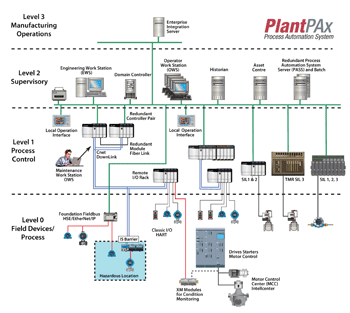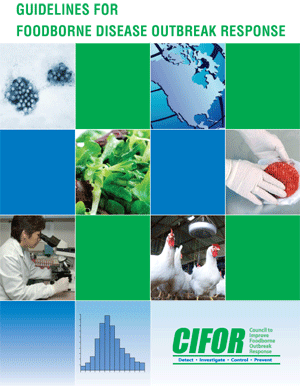
Manufacturers reveal cautious optimism
Nearly six in 10 senior manufacturing executives (57%) have a positive outlook for the US economy over the next six months, but more than half (51%) have a slightly more pessimistic outlook for the manufacturing sector. Over the next six months, 70% of manufacturers expect to keep staffing levels the same.
About half (49%) of the executives expect their company’s performance to decline with 12% (disproportionably small businesses) reporting their company is in danger of failing. Customer demand is cited as the top growth challenge, followed by access to loans and credit, over the next 12 months.
The majority of manufacturing executives expect to reduce costs across the board over the next year, such as operational (80%), supplier (65%) and labor (51%) costs.
Despite the pressure to reduce costs, executives are continuing to invest in their companies. The most common investments are in quality improvement systems (51%). Among executives with plans for M&A (mergers and acquisitions) activity, 85% report no changes in their plans, 12% plan to increase and 3% plant to decrease M&A activities.
Among those companies that sell outside the
One step closer to healthy school snacks
As a result of the agreement, Sodexo will only offer age-appropriate portion sizes that limit total calories. The company also only will supply snacks that have no more than 35% of their calories from fat and 10% of calories from saturated fat. The approved snacks will contain no more than 35% sugar by weight and have no more than 230 milligrams of sodium, nor contain trans fats.
The

Institute brings quality education
The Institute houses all of ASQ’s learning offerings in one location and offers several features:
• ASQ Learning Institute calendar: Provides a clear view of all professional development opportunities over an 18-month period.
• Course catalog: A list of all available ASQ training including instructor-led, online and document-based.
For more about the ASQ Learning Institute, visit http://www.asq.org/learninginstitute.Automation News

Dairy integrates plant intelligence with ERP
Working in cooperation with the Severnside team, as well as Dairy Crest’s corporate Oracle integration team, FMA scheduled all work to take place during a series of planned outages to minimize impact on production.
Involving the complete integration of the plant control system with Dairy Crest’s Oracle ERP system, the project has enabled key plant operating data to be automatically provided to the ERP system. The existing FMA-installed plant IT system already had been producing Web-based reports for operations from automatic production data capture.
The integrated IT solution developed by the integrator ensures the regular uploading of dairy production records, plant utilization, ingredients usage, quality information, genealogy data and other production information. Key business-critical elements of this data are now integrated into the Oracle system.
Plant data automatically is recorded in real time to provide a precise, historic record with key data, also now being provided automatically to Dairy Crest’s group-wide Oracle ERP system.
The key benefits of the integration project provide Dairy Crest Severnside with:
- Total traceability from raw goods intake to final product packaging;
- Comprehensive losses tracking, in relation to geography, departments, processes and procedures;
- Rapid batch tracking of all processes and events;
- Fully automated reporting and forward/backward genealogy;
- Transparent auditing and more easily followed audit trails;
- Greater transparency of all production processes.
Integrating production data into the corporate ERP empowers Dairy Crest management with the information necessary to better operate the business in real time, something that simply would not have been achievable with a paper-based system.
“When Severnside was originally commissioned,” comments FMA Managing Director Terry Clough, “there were no Dairy Crest corporate plans for such high levels of automatic data transfer. Through our integration activities, the dairy now benefits from a [capable] information system, one that is sufficiently powerful and versatile to enable operational decisions to be implemented and acted upon in real time.”
For more information, contact FMA Process Engineering.
Rockwell Automation integrates process control and safety
The integration allows process control and process safety systems to communicate directly with each other and share important data, such as diagnostics information, system status, alarms, events and other critical information. This helps improve productivity, minimize troubleshooting time and provides faster recovery from interruptions without compromising safety or security.
The integration is for volatile applications that require separation between process safety and process control, but where manufacturers also want to leverage the benefits of a single network, architecture and information platform.Food Safety News

Collaborative guidelines for foodborne disease outbreak response published
The guidelines are intended to give all agencies a common foundation from which to work and provide examples of the key activities that should occur during the response to outbreaks of foodborne disease. The guidelines were developed by experts in epidemiology, environmental health, laboratory science and communications.
The guidelines are not intended to replace current procedure manuals for responding to outbreaks. Instead, they are designed as a reference document for comparison with existing procedures; to fill in gaps and update site-specific procedures; to provide models for new procedures where they do not exist; and to provide training to program staff. The document is available in electronic and hard-copy formats for state and local health departments. CIFOR has included a foreword by Dr. Michael Osterholm of the Center for Infectious Disease Research and Policy and Michael Taylor, senior advisor to the FDA Commissioner, two well-respected food safety experts.
CIFOR is a multidisciplinary partnership organized to increase collaboration among food safety officials at all levels of government and in all areas of the country with the ultimate goal of reducing the burden of foodborne illness in the

Governors urged to block sale of untreated Gulf Coast oysters
In 2003,
“Letting untreated

Lab provides growth measurement of micro-organisms
The Discovery Lab allows researchers to test various plant, microbial or animal sources to determine whether they have antimicrobial or prebiotic properties. It operates within the university’s Center for Crops Utilization Research for on- and off-campus clients.
The lab runs two Bioscreen C Growth Curve units to perform automated growth curve determinations of aerobic or anaerobic microbes under a variety of conditions. Organisms that can be evaluated include a wide variety of foodborne pathogens and bacteria as well as selected yeasts and molds. The units are capable of incubating and evaluating up to 200 different microbial cultures and their growth parameters in a single experiment. Data can be generated in a few days compared to several months using conventional techniques.
Researchers at
Other equipment in the Discovery Lab includes analytical and preparative high-pressure liquid chromatographs, a UV-visible spectrophotometer, an organic spray dryer and laminar-flow hoods. The lab can provide both analytical and preparative services to clients on a fee basis for on- and off-campus users.
For more information about the Discovery Lab, visit the lab’s Web site.